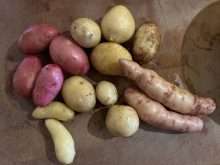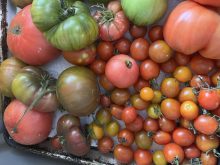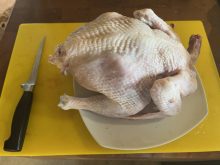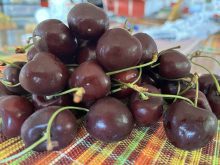A flurry of recent books dishes up Prairie eats, among them tawâw: Progressive Indigenous Cuisine by Shane Chartrand and Jennifer Cockrall-King; Only in Saskatchewan: Recipes and Stories from the Province’s Best-Loved Eateries by Naomi Hansen; Eat Alberta First: A Year of Local Recipes from Where the Prairies Meet the Mountains by Karen Anderson; and Vegetables: A Love Story by Renée Kohlman.
These fine books reflect our talented community of cooks. I led the way out of the locavore gate with my 1992 locavore restaurant, Foodsmith, and 20 years later, Foodshed: An Edible Alberta Alphabet.
Read Also

Gentle treatments for pain in the neck
Heading toward year-end, people unknowingly tense up against the cold and busyness, causing neck pain that can often be treated with appropriate support and gentle mobility, athletic therapist Kathlyn Hossack says.
Kudos also to former Grainews columnist Amy Jo Ehman, author of two seminal locavore food books, Out of Old Saskatchewan Kitchens and Prairie Feast: A Writer’s Journey Home for Dinner.
Nod to Prairie traditions
The oeuvre continues to expand with the release of Prairie: Seasonal, Farm-Fresh Recipes Celebrating the Canadian Prairies, by Dan Clapson and Twyla Campbell. The book’s seasonal recipes lead with summer’s largesse and conclude with a short section of staples and an even shorter list of provincially organized sources.
The authors’ nod to Prairie traditions like freezing, drying, cellaring and preserving pays tribute to farmers and reminds us that local eating keeps money in the community. They also offer tips on managing waste and utilizing scraps and leftovers, even more timely as food prices continue to soar.
Clapson and Campbell called on chefs who participated in their annual Prairie Grid itinerant dinner series, among them Saskatchewan chefs Jenni Lessard and Christie Peters, and contributed their own updated takes on Prairie fare. Prairie is handsome, with full-page colour photographs by Dong Kim for every recipe and beverage.
Clapson repeatedly fesses up to his pickle mania (with the exception of bread and butter pickles!), using pickle brine to good advantage in leek soup, gribiche and marinades, but the book offers few actual pickle recipes.
To broaden your aperitivo range, try local-first bevvies like “Watermelon Sugar” — named after crooner Harry Styles — with Thai basil, gin and amaro, a bitter Italian herbal digestif-style liqueur made by several Canadian distillers. In Saskatchewan, use Lucky Bastard Gambit Gin, but Albertans might prefer Campbell’s suggestion of Anohka’s Tempest Dry Gin.
Notable dishes worth investigating include stovetop tomato confit; soufflé pancakes laced with coffee and rye whisky; tea-infused crème anglaise, or stirred custard, with roasted fruit; charred cabbage with Béarnaise sauce; beautiful beet-filled mezzaluna, or ravioli, from Peters and a dense mushroom tourtière that surely won’t miss the absence of pork. Among the spare collection of desserts is a standout winter chocolate layer cake with a layer of sugared nuts.
“We’re not fussy, so we’ve kept this pretty simple,” they write. True that. The origins of the stylish dishes cut a swath as wide as a combine’s, from Ukrainian classics like borscht re-imagined to Calgary chef Jinhee Lee’s kimchee.
Each dish is simple in execution, but in presentation the dishes lean upscale, which is no surprise as the authors are restaurant reviewers. Clapson’s back-of-book acknowledgements include a shout-out to his friends who “often have to remind me that life isn’t solely about cooking ‘gourmand’ or dining out at ‘cool’ restaurants.”
Prairie encourages us to put on our fancy pants, set the table with Granny’s favourite Medalta stoneware or Depression glass, and grab our aprons. First we eat, then we swap stories about our granny’s favourite pickles.

Cowboy Country Spice Blend
This robust blend has lamb, beef or bison writ large over its flavour profile. Start with a Moroccan-inspired blend called ras el hanout, which means “head of shop.” In a pinch, you could substitute an Indian garam masala or curry blend. Makes 1/2 cup.
- 2 tablespoons ground espresso or dark roast coffee beans
- 2 tablespoons ras el hanout
- 2 tablespoons brown sugar
- 4 teaspoons kosher salt
Mix well and store in airtight containers.

Prairie Grid Spice Blend
This seasoning blend originates with Scott Redekopp, executive sous chef at Calgary’s Hotel Arts, who calls it an alternative to Montreal steak spice, good on meats, salads and roasted vegetables.
As with any blend, it makes allowance for temperament and taste, as well as availability. For instance, in the absence of rosehips and smoked salt, I used dried rose petals and smoked paprika, used whole cloves in place of ground and omitted the Sichuan peppercorns because I don’t like their mouth-numbing quality. Starting with whole spices always yields best flavours. Makes 2 cups.
- 2 tablespoons dried rosehips
- 2 tablespoons fennel seed
- 2 tablespoons Sichuan peppercorns
- 2 tablespoons coriander seed
- 2 tablespoons cumin seed
- 3 whole star anise
- 7 tablespoons white sugar
- 2 tablespoons dried minced garlic
- 2 tablespoons onion powder
- 2 tablespoons ground ginger
- 1 tablespoon ground cloves
Dry roast the first six ingredients in a small pan over medium-high heat for two to three minutes, stirring periodically. Transfer to a spice mill and grind finely. Mix in the remaining ingredients and divide into several airtight containers. Keeps for several months in a cool dry space.















